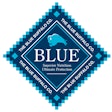For better or worse, I’m not one to make New Year’s resolutions, and I find most lists predicting what will happen in the coming year to be fairly trite and, well, predictable. (Sorry, bad pun.)
But I do pay attention to ones from market research firms like Packaged Facts and Mintel, because I think they identify consumer trends that have important implications for our industry. Packaged Facts especially has information pertinent to petfood—though heading into the new year, the outlook in terms of consumer sentiment and purchasing behavior is not altogether positive.
Mintel tends to offer consumer insights at a broader but no less helpful level. “These annual predictions represent continuations of current big-picture trends, rather than major changes in the marketplace and what companies are doing,” says Lynn Dornblaser, director of innovation and insight.
In fact, her company has released several forecast lists for 2011; one on consumer packaged goods trends might spur a few ideas for petfood manufacturers, marketers and suppliers:
1. Quiet reduction —the process of well-known ingredients experiencing “covert reductions” in formulations for human food products, as opposed to becoming key labeling issues that are overtly communicated or claimed. Mintel mentions sodium, sugar and high fructose corn sugar. Are there any parallels among petfood ingredients?
2. Redefining natural —this perhaps has the most relevance to petfood, which has been seeing growth in “natural” claims that rivals the surge in claims for human food products. “Terms that are vague or not well understood will come under fire, and we are due to see an intervention of regulatory bodies,” Mintel says. “Also, expect to see a new focus on accentuating the positives of what is in a product, rather than emphasizing what is not in it.”
For an example of possible regulatory intervention, in early October the US Federal Trade Commission released proposed revisions to its Green Guides, which give guidance for making environmental marketing claims. Though the proposals involve tweaks rather than outright changes, they are more specific in what marketers can (and cannot) do.
3. Professionalization of the amateur —the prevalence of products that help consumers get near-professional results with the convenience and lower expense of doing it themselves at home. Among human products, an example is “salon-style” hair treatments; in petfood, it could be the kits that allow pet owners to create “homemade” meals for their pets that ensure complete and balanced nutrition.
4. Sustainability stays focused on the basics —such as reduced packaging. Mintel isn’t predicting sustainability will become any less important to consumers, but the emphasis will be on “new twists” to existing elements (e.g., boxless cereal bars) rather than any truly new developments. The exception, Mintel says, could be in water consumption and conservation.
5. Blurring categories —innovation taking place via more “hybrid forms” of products (think of all the new types of sparkling beverages, Mintel says) as well as new ways that consumers use products (e.g., beverages consumed as snacks and snacks as meals). How does this play out in petfood?
6. New retro —more big brands returning to old products and ad campaigns, including old formulations, packaging designs and marketing with a retro feel. Mintel sees nostalgia overall as an escalating trend.
“Understanding the major trend areas and how they change from year to year is essential for companies to be successful when developing and launching new products,” Dornblaser says. What’s next for your company?
















